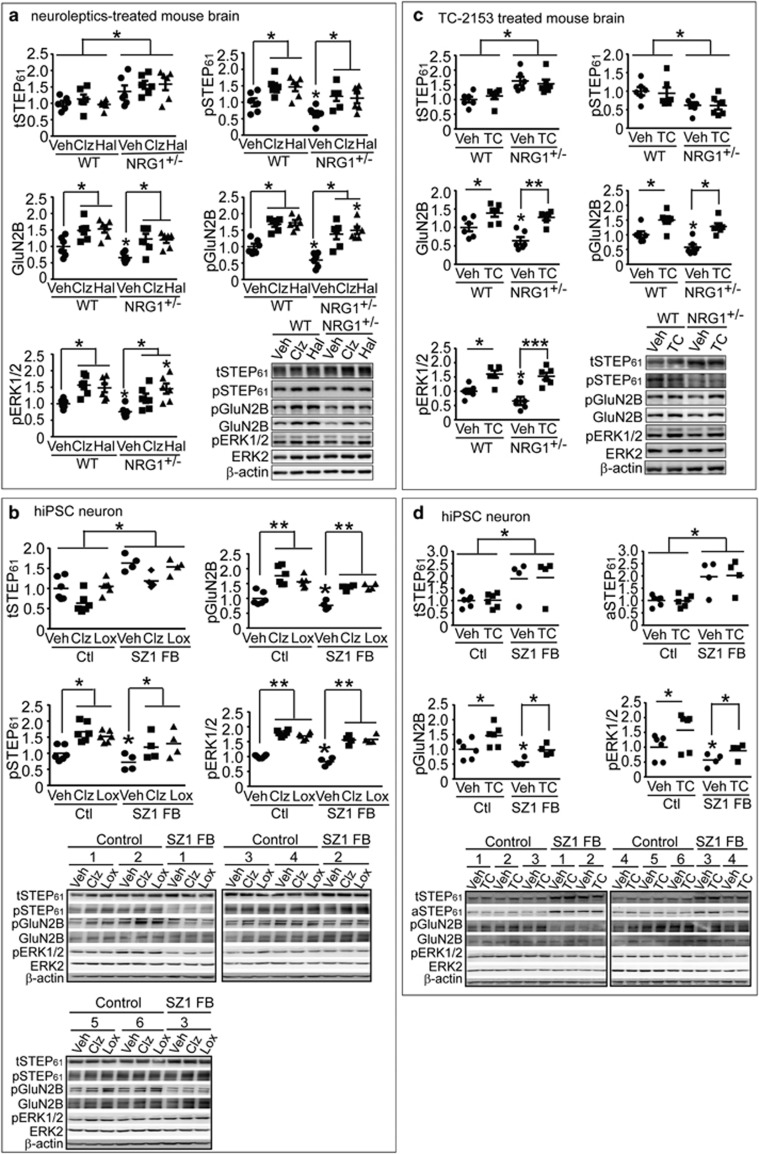Figure 2.
Pharmacological inhibition of STEP61 restores N-methyl D-aspartate glutamate receptor biochemical signaling in Nrg1+/− mice and human induced pluripotent stem cell (hiPSC) neurons. (a) Antipsychotic administration leads to inactivation of STEP61 and increases in Tyr phosphorylation of GluN2B and ERK1/2 in vivo. Wild-type (WT) and Nrg1+/− mice were administered clozapine (Clz, 1 mg kg−1, intraperitoneally (i.p.)), haloperidol (Hal, 2 mg kg−1, i.p.) or vehicle (Veh) daily for 2 weeks. Changes in phosphorylation of STEP61 and its substrates in P2 fractions were analyzed by western blotting (WB). (b) Antipsychotics Clz (5 μM) and loxapine (Lox 10 μM) resulted in phosphorylation and inactivation of STEP61 and subsequent increases in Tyr phosphorylation of GluN2B and ERK1/2 in control and SZ1-FB hiPSC neurons. (c) WT and Nrg1+/− mice were administered TC-2153 (TC, 10 mg kg−1, i.p.) or vehicle (Veh) acutely for 3 h. P2 fractions were used to probe for STEP and its substrates by WB. Mice data are expressed as mean±s.e.m. and statistical significance was determined using one-way analysis of variance with Bonferroni’s test (*P<0.05, **P<0.01, ***P<0.001, n=6 each group). (d) TC-2153 treatment leads to significantly increased pGluN2B and pERK1/2 levels in control and SZ1-FB hiPSC neurons, without altering tSTEP61 or aSTEP61 levels. hiPSC neuron data are expressed as mean values from 3 to 6 replicates and statistical significance was determined by nested ANOVA analyses using JMP statistical software (*P<0.05, **P<0.01, SZ1-FB: 6 controls and 4 patients).

